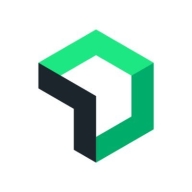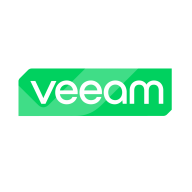

New Relic and Veeam Data Platform both compete in the IT performance management category. New Relic holds an advantage in application performance monitoring, while Veeam stands out for its robust backup capabilities.
Features: New Relic features include application performance monitoring, real-time insights, and detailed dashboards which aid dev and ops teams. It also offers sophisticated alerting systems. Veeam Data Platform excels with its backup features, providing strong data protection for both virtual and physical environments. Its replication capabilities and comprehensive backup solutions cater well to enterprises seeking data resiliency.
Room for Improvement: New Relic could improve data privacy controls, clarity, and granularity in reporting. Users express concerns over its alerting and integration with other services. Veeam Data Platform requires better support for physical systems and desires easier cloud service integration. Users also point to speed improvements and a simpler licensing model.
Ease of Deployment and Customer Service: New Relic, designed for cloud environments, faces deployment challenges for on-premises preferences. Its customer service is well-rated but could improve response times. Veeam Data Platform aligns with on-premises deployment, simplifying infrastructure setups. It is praised for excellent customer service and technical expertise.
Pricing and ROI: New Relic is often viewed as costly, impacting smaller businesses, but delivers substantial ROI for comprehensive needs. Its pricing model, based on data ingestion, limits cost efficiency as usage scales. Veeam Data Platform is considered reasonably priced for enterprises, offering good value through its features, although its licensing complexity is a noted challenge.
Issues that could be solved quickly sometimes take longer because they go around in circles.
Most cases are handled perfectly.
I would rate their technical support a 10 out of 10.
Integration with other vendors is also seamless.
In order to scale Veeam Data Platform, we have to pay a lot more money.
There are no issues with stability in Veeam Data Platform.
Email alert customization is limited; it cannot be tailored much, which makes the system more rigid than optimal.
Reducing it by 20% would make it more accessible to a broader range of customers.
OpenStack is something Veeam Data Platform doesn't support, and they haven't indicated that they will support it in the future.
Compared to IBM, Veeam Data Platform is simpler but brings some challenges with automation in backup and Oracle backup configuration.
I believe it is not expensive; it's the regular price.
A reduction of 20% in the current cost would make the solution more attractive to clients.
Veeam Data Platform is more expensive than OpenStack because we pay for it in US dollars, while we pay for OpenStack in Egyptian pounds.
Using New Relic speeds up troubleshooting and resolution, giving us a clearer picture of where issues are, thus saving time and effort.
The most important aspect of this platform is data security with immutable data in the storage.
The platform is user-friendly, comprehensive, and compatible with numerous market solutions, including virtualization and bare metal servers.
Veeam Data Platform provides me with the most useful features such as application restore, single file restore, backup and replication, and continuous replication.


New Relic is a powerful tool for optimizing web pages, tracking user behavior, and monitoring application performance. It helps detect anomalies, generate metrics, and create dashboards for synthetics monitoring, container workloads, stress tests, and more.
New Relic provides organizations with comprehensive insights into APIs, infrastructure, and scalability. It supports mobile and web applications with features like java tracking, health maps, customizable dashboards, and drill-downs. Users benefit from its easy initial setup, accurate alerts, UI monitoring, error tracking, and traceability. New Relic supports multiple ecosystems with straightforward pricing and new feature introductions, offering end-to-end monitoring, thorough data analysis, and effective problem resolution.
What are New Relic's most important features?New Relic is leveraged in industries such as e-commerce, finance, and technology. It helps monitor web traffic, evaluate load balancing, and ensure applications meet performance standards. Companies use it for stress tests, container-based workloads, API monitoring, and infrastructure management. Its integration capabilities are valuable for maintaining performance and scalability across diverse ecosystems, aiding in thorough data analysis and problem resolution.
Veeam Data Platform is designed for modern data management, providing secure backups, intelligent data insights, and resilience. It ensures data is protected, recoverable, and manageable across complex environments, supporting business continuity effectively.
Veeam Data Platform stands out with its robust capabilities in data protection, orchestrated recovery, and efficient management. It offers a simple interface while ensuring data security and availability, which is critical for businesses. The platform's compatibility with virtual machines, databases, and applications across VMware, Hyper-V, and cloud environments makes it a versatile choice for backup and disaster recovery strategies. Users gain confidence from its performance, from secure backups to facilitating effective infrastructure monitoring.
What are the key features of Veeam Data Platform?Veeam Data Platform is widely implemented by industries needing robust disaster recovery plans and data management solutions. It is particularly valuable in environments utilizing hybrid cloud solutions, protecting mission-critical workloads, and ensuring business continuity. Businesses leverage its capabilities to safeguard data integrity and facilitate long-term retention through efficient infrastructure management.
We monitor all Cloud Monitoring Software reviews to prevent fraudulent reviews and keep review quality high. We do not post reviews by company employees or direct competitors. We validate each review for authenticity via cross-reference with LinkedIn, and personal follow-up with the reviewer when necessary.